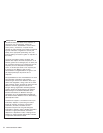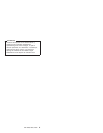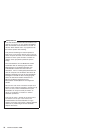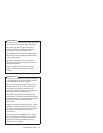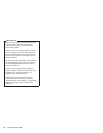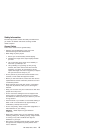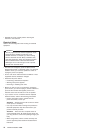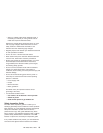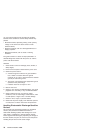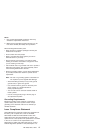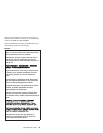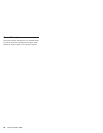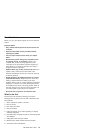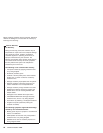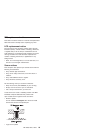you can continue without first correcting the problem.
Consider these conditions and the safety hazards they
present:
v Electrical hazards, especially primary power (primary
voltage on the frame can cause serious or fatal
electrical shock).
v Explosive hazards, such as a damaged CRT face or
bulging capacitor.
v Mechanical hazards, such as loose or missing
hardware.
The guide consists of a series of steps presented in a
checklist. Begin the checks with the power off, and the
power cord disconnected.
Checklist:
1. Check exterior covers for damage (loose, broken, or
sharp edges).
2. Power-off the computer. Disconnect the power cord.
3. Check the power cord for:
a. A third-wire ground connector in good condition.
Use a meter to measure third-wire ground
continuity for 0.1 ohm or less between the external
ground pin and frame ground.
b. The power cord should be the appropriate type as
specified in the parts listings.
c. Insulation must not be frayed or worn.
4. Remove the cover.
5. Check for any obvious non-IBM alterations. Use good
judgment as to the safety of any non-IBM alterations.
6. Check inside the unit for any obvious unsafe
conditions, such as metal filings, contamination, water
or other liquids, or signs of fire or smoke damage.
7. Check for worn, frayed, or pinched cables.
8. Check that the power-supply cover fasteners (screws
or rivets) have not been removed or tampered with.
Handling Electrostatic Discharge-Sensitive
Devices
Any computer part containing transistors or integrated
circuits ( ICs) should be considered sensitive to
electrostatic discharge (ESD). ESD damage can occur
when there is a difference in charge between objects.
Protect against ESD damage by equalizing the charge so
that the machine, the part, the work mat, and the person
handling the part are all at the same charge.
16 ThinkPad R30/R31 HMM



